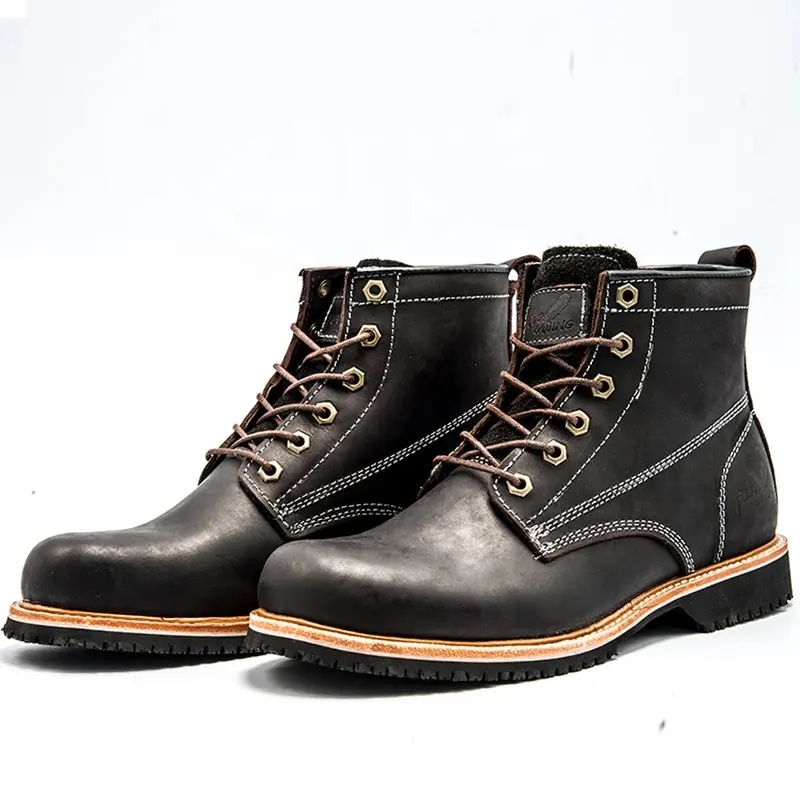Introduction:
In the challenging world of labor and industry, waterproof work boots stand as an indispensable asset, defying the forces of nature to keep workers comfortable and secure. This article serves as your comprehensive guide to waterproof work boots, emphasizing their significance, exploring the diverse options available, and explaining their applications across various vocations. Join us on this enlightening journey as we unveil the pivotal role that waterproof work boots play in safeguarding your feet and enhancing your performance at work.
Chapter 1: The Vital Role of Waterproof Work Boots
This chapter underscores the critical importance of waterproof work boots, including:
The prevalence of harsh working conditions, where exposure to water and moisture can lead to discomfort and safety hazards.
The fundamental functions and attributes of waterproof work boots, from keeping feet dry to providing essential support.
The shared benefits they offer to both employees and employers in maintaining a safer, more productive work environment.
Their extensive applications across diverse industries, from construction and agriculture to outdoor work and emergency response.
Chapter 2: Navigating the Diversity of Waterproof Work Boots
Understanding the diversity of options is essential. This chapter explores:
Different types of waterproof work boots, from traditional work boots to modern athletic-style safety shoes.
Features like insulation, electrical hazard protection, and moisture-wicking properties that make them suitable for different work settings.
Materials used in their construction, including leather, advanced composites, and synthetic fabrics, and their role in maintaining dryness.
Designs that cater to specific work environments, from swampy construction sites to wet industrial settings.
Chapter 3: Choosing the Right Waterproof Work Boots
Selecting the ideal pair of waterproof work boots is pivotal for comfort and safety. This chapter provides a comprehensive guide, covering:
Evaluating your workplace conditions and specific safety requirements, including exposure to water, mud, or chemicals.
Guidelines for fitting and sizing to ensure all-day comfort and dryness.
Tips for maintenance to extend the lifespan of your waterproof work boots and ensure continued protection.
Ensuring compliance with safety standards and regulations pertinent to your industry.
Chapter 4: Waterproof Work Boots Across Industries
This chapter delves into how waterproof work boots are customized to meet the unique demands of different sectors, including:
The need for moisture resistance in agriculture, where wet fields are common.
The importance of electrical hazard protection and insulation in electrical and utility work.
Protective features required in construction, outdoor work, and other challenging environments.
Specialized waterproof work boots for emergency responders, ensuring they stay dry and comfortable during critical missions.
Chapter 5: The Ongoing Evolution of Waterproof Work Boots
The world of waterproof work boots is ever-evolving. We explore the latest innovations, including:
Use of advanced waterproofing technologies for superior moisture resistance without added bulk.
Integration of comfort technologies to ensure all-day wear, even in wet conditions.
Adoption of eco-friendly and sustainable materials in response to environmental concerns.
Innovations in style and design that combine safety with modern fashion.
Conclusion: Your Trusted Companions in Workplace Comfort and Safety
Waterproof work boots are more than just protective gear; they are your trusted companions in workplace comfort and safety, safeguarding your feet and enhancing your performance. By understanding their importance, exploring the diversity of options, and selecting the right pair, you actively contribute to creating a more secure, dry, and productive work environment.



